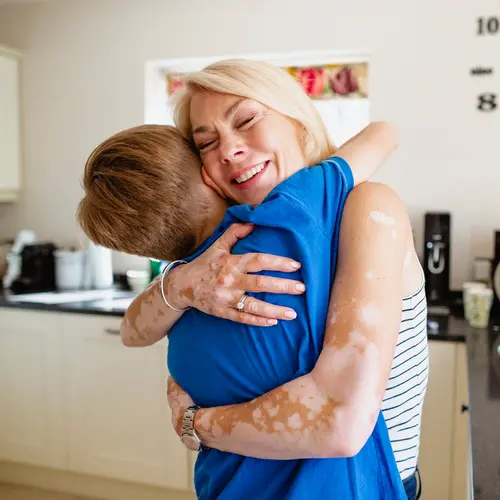A yellow jacket sting is unpleasant for anyone. However, some people are allergic to yellow jacket venom, so a sting can be life threatening. There are several things you can do to treat a yellow jacket sting at home, and there are steps you can take to prevent stings.
What Causes a Reaction to a Yellow Jacket Sting?
All stinging insects, including yellow jackets, belong to the class of insects called Hymenoptera. They inject venom into your skin through a stinger. The venom is what creates a reaction. Yellow jackets are responsible for most stings in the U.S. They are the most aggressive of the stinging insects.
Do Yellow Jackets Leave Stingers?
Yellow jackets don’t usually leave stingers in your skin. Because of this, they can sting you multiple times, unlike bees. Bees leave their stingers in your skin, so they can only sting you once.
Symptoms of a Yellow Jacket Sting
Local reaction. For most people, a yellow jacket sting causes minor discomfort that passes within a few hours. These symptoms occur at the site of the sting and can include:
- Redness
- Swelling
- Pain
- Itching
- Warmth
Large local reaction. Some people experience a large local reaction. If you have a large local reaction once, you will usually have this type of reaction if you are stung again. Symptoms of this include:
- Mild reaction initially that grows to about 2 inches within 12 to 24 hours.
- Reaction peaks 48 to 72 hours after the sting.
- Reaction occurs at the location of the sting but may include an entire arm or leg.
- Symptoms generally get better over 5 to 10 days.
Systemic reaction. Yellow jacket stings can cause serious allergic reactions called systemic reactions in some people. This type of reaction affects one or more organ systems. Symptoms of a systemic reaction can include:
- Coughing
- Tightness in your throat or chest
- Tickling in your throat
- Wheezing
- Trouble breathing
- Nausea or vomiting
- Dizziness or fainting
- Sweating
- Anxiety
- Hives over a large part of your body
Treating Yellow Jacket Stings
The main symptom of a yellow jacket sting is redness and pain. Here are some ways you can treat a local reaction:
Remove the stinger. Although yellow jackets don’t normally leave a stinger, sometimes they do. The stinger looks like a tiny black dot in the area of the sting. Use your fingernail or a credit card to scrape it off. If it's below the surface of your skin, leave it alone. It will come out on its own.
Clean the area. Wash the area thoroughly with soap and water.
Elevate. If the sting is on your arm or leg, prop it up to help reduce the swelling.
Apply meat tenderizer. Make a paste of meat tenderizer and water. Apply to the sting with a cotton ball for 20 minutes. This might neutralize the venom and help with the pain and swelling. If you don't have meat tenderizer, you can use an aluminum-based deodorant or baking soda. Do not do this if the sting is near your eye.
Use a cold pack. If the meat tenderizer doesn't work, rub the area with an ice cube for 20 minutes.
Pain medicine.Acetaminophen or ibuprofen may help with the pain. Take it according to the directions on the bottle.
Apply a steroid cream. Use a 1% hydrocortisone cream. You can buy this cream over the counter. Use up to 3 times daily.
Take an antihistamine. If your doctor says it’s okay, take an over-the-counter antihistamine.
What to Do for an Allergic Reaction
Call 911. If you or someone you’re with has any of the following symptoms after a yellow jacket sting, call 911 immediately:
- History of severe allergies to yellow jacket stings
- Wheezing
- Trouble breathing
- Hoarseness, coughing, tightness in the throat
- Problems swallowing
- Drooling
- Slurred speech
- Confusion
- Fainting
- Too weak to stand
Seek help immediately. In any of the following situations after a yellow jacket sting, call your doctor or seek immediate treatment:
- Sting inside your mouth or eye
- Stomach pain
- Vomiting
- More than 5 stings per 10 pounds of weight, or more than 50 stings in a teenager
- Spreading redness from sting site
- If you or the person who was stung feels very sick
- If you feel that you or the person who was stung needs to be seen urgently
How to Prevent Yellow Jacket Stings
Here are some tips to help avoid yellow jacket stings:
- Wear light-colored clothing.
- Avoid wearing scented deodorant, perfume, or soap.
- Check your drink container before taking a drink.
- Avoid areas where you know there are yellow jackets.
- If a yellow jacket is in your car, stop your car and roll down the windows so it can get out.
- Don't swat at yellow jackets. If you see one flying around, slowly back away.
- If a yellow jacket lands on you, be very still and slowly brush it away or wait for it to fly off.

